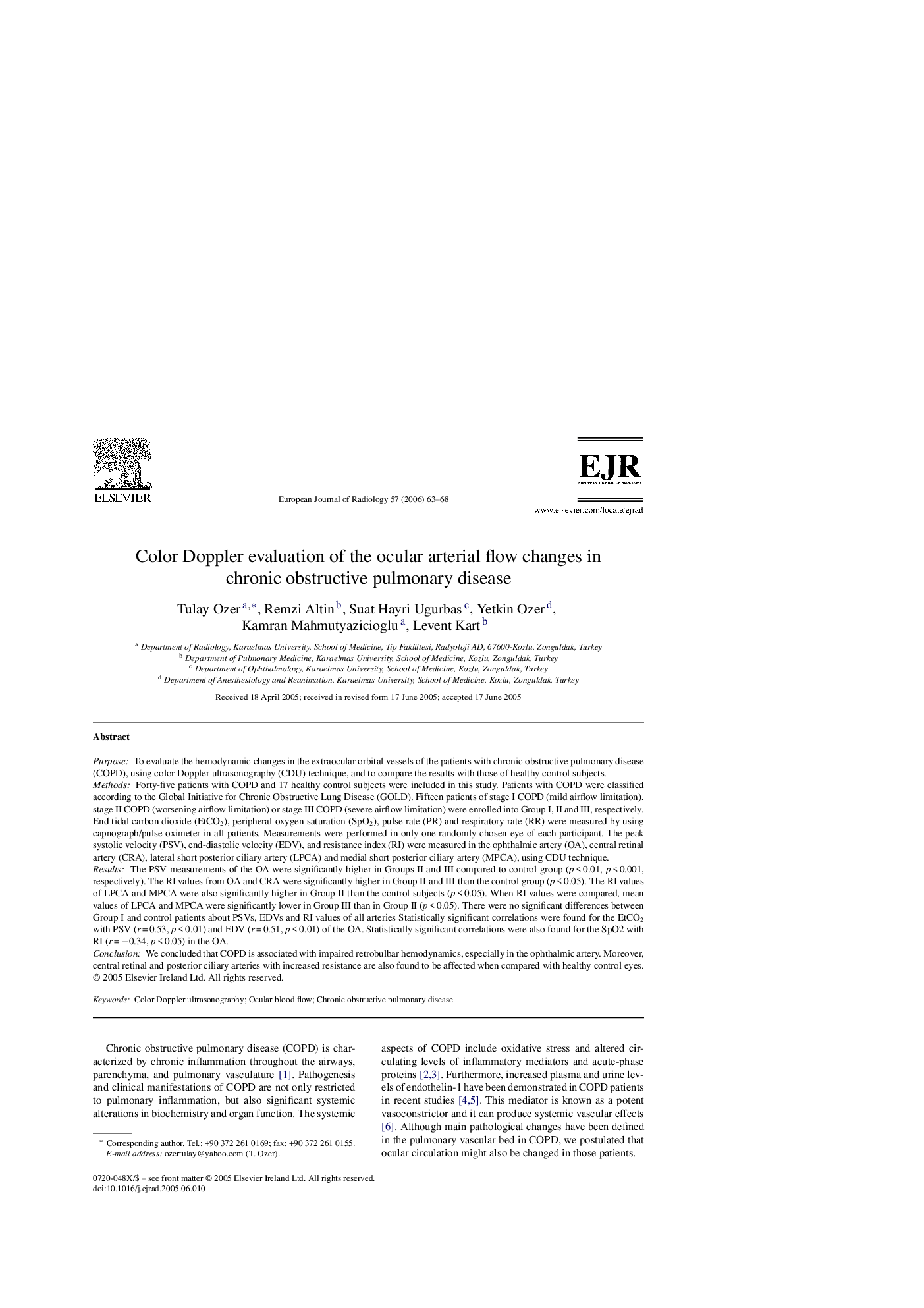| Article ID | Journal | Published Year | Pages | File Type |
|---|---|---|---|---|
| 4228820 | European Journal of Radiology | 2006 | 6 Pages |
PurposeTo evaluate the hemodynamic changes in the extraocular orbital vessels of the patients with chronic obstructive pulmonary disease (COPD), using color Doppler ultrasonography (CDU) technique, and to compare the results with those of healthy control subjects.MethodsForty-five patients with COPD and 17 healthy control subjects were included in this study. Patients with COPD were classified according to the Global Initiative for Chronic Obstructive Lung Disease (GOLD). Fifteen patients of stage I COPD (mild airflow limitation), stage II COPD (worsening airflow limitation) or stage III COPD (severe airflow limitation) were enrolled into Group I, II and III, respectively. End tidal carbon dioxide (EtCO2), peripheral oxygen saturation (SpO2), pulse rate (PR) and respiratory rate (RR) were measured by using capnograph/pulse oximeter in all patients. Measurements were performed in only one randomly chosen eye of each participant. The peak systolic velocity (PSV), end-diastolic velocity (EDV), and resistance index (RI) were measured in the ophthalmic artery (OA), central retinal artery (CRA), lateral short posterior ciliary artery (LPCA) and medial short posterior ciliary artery (MPCA), using CDU technique.ResultsThe PSV measurements of the OA were significantly higher in Groups II and III compared to control group (p < 0.01, p < 0.001, respectively). The RI values from OA and CRA were significantly higher in Group II and III than the control group (p < 0.05). The RI values of LPCA and MPCA were also significantly higher in Group II than the control subjects (p < 0.05). When RI values were compared, mean values of LPCA and MPCA were significantly lower in Group III than in Group II (p < 0.05). There were no significant differences between Group I and control patients about PSVs, EDVs and RI values of all arteries Statistically significant correlations were found for the EtCO2 with PSV (r = 0.53, p < 0.01) and EDV (r = 0.51, p < 0.01) of the OA. Statistically significant correlations were also found for the SpO2 with RI (r = −0.34, p < 0.05) in the OA.ConclusionWe concluded that COPD is associated with impaired retrobulbar hemodynamics, especially in the ophthalmic artery. Moreover, central retinal and posterior ciliary arteries with increased resistance are also found to be affected when compared with healthy control eyes.
